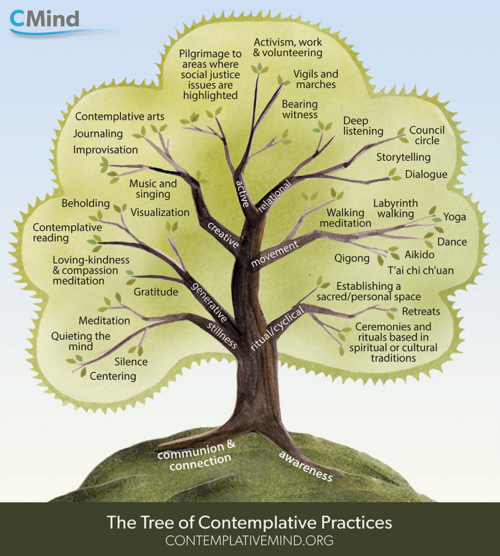
You can choose which fruit from the tree of contemplative practices appeals to you.
By: Kelechi Obasi
One of the most widely read collections of theological literature tells the account of how free will and the ability to choose were born. The creation was placed in an exquisite environment in that Bible tale—it was a magnificent paradise. They were given unrestricted access to and authority over the fiefdom and the food feast supplied by the land.
However, one tree and its fruit were forbidden. According to legend, humanity’s love affair with this tree’s ‘forbidden fruit’ culminated in a headlong free fall from paradise’s magnificence. The rest is history.
What if we were all given a second chance at life? Would you take advantage of the opportunity to make the best decisions for your physical, mental, spiritual, and emotional health? The Tree of Contemplative Practices may just have the proper fruit to satisfy the longing for emotional support, mental equilibrium, self-knowledge and awareness.

The Centre for Contemplative Mind in Society promotes further involvement with the Tree of Contemplative Practices. Climbing this tree leads to life-changing decisions that begin with knowing and pursuing the concepts of awareness, communication, and connection. These layers make up the roots, representing the two primary goals of all contemplative practices: increasing awareness and strengthening one’s relationship with God, the Divine, and inner knowledge.
The tree’s roots contain and transcend variations in religious traditions, from which many of the practices arose, and allow for the integration of new techniques developed in secular contexts.
The branches represent the numerous groupings of practices. Stillness Practices, for example, concentrate on quieting the mind and body to build tranquillity and attention. Prayers, visualizations, and chanting are examples of Generative Practices. Still, they all have the same goal of creating thoughts and feelings of devotion and compassion rather than soothing and quieting the mind.
It is equally important to understand that these classes are merely suggestions. Mantra repetition, for example, could be classified as a Stillness Practice rather than a Generative one. Participants and proponents of the contemplative mind process have indicated that the trees’ techniques have been valuable to them in organizational and classroom settings.
There are many other activities not included on the Tree (see accompanying diagram), including those practices which may seem more regular or unexciting, such as gardening, eating, or taking a bath. However, they may be considered a contemplative practice if completed with the intention of building increased awareness or developing a stronger connection with a chosen higher power, Divinity, or one’s inner knowledge.
For more information about the Tree of Contemplative Practices, please visit the Centre for Contemplative Mind in Society.




